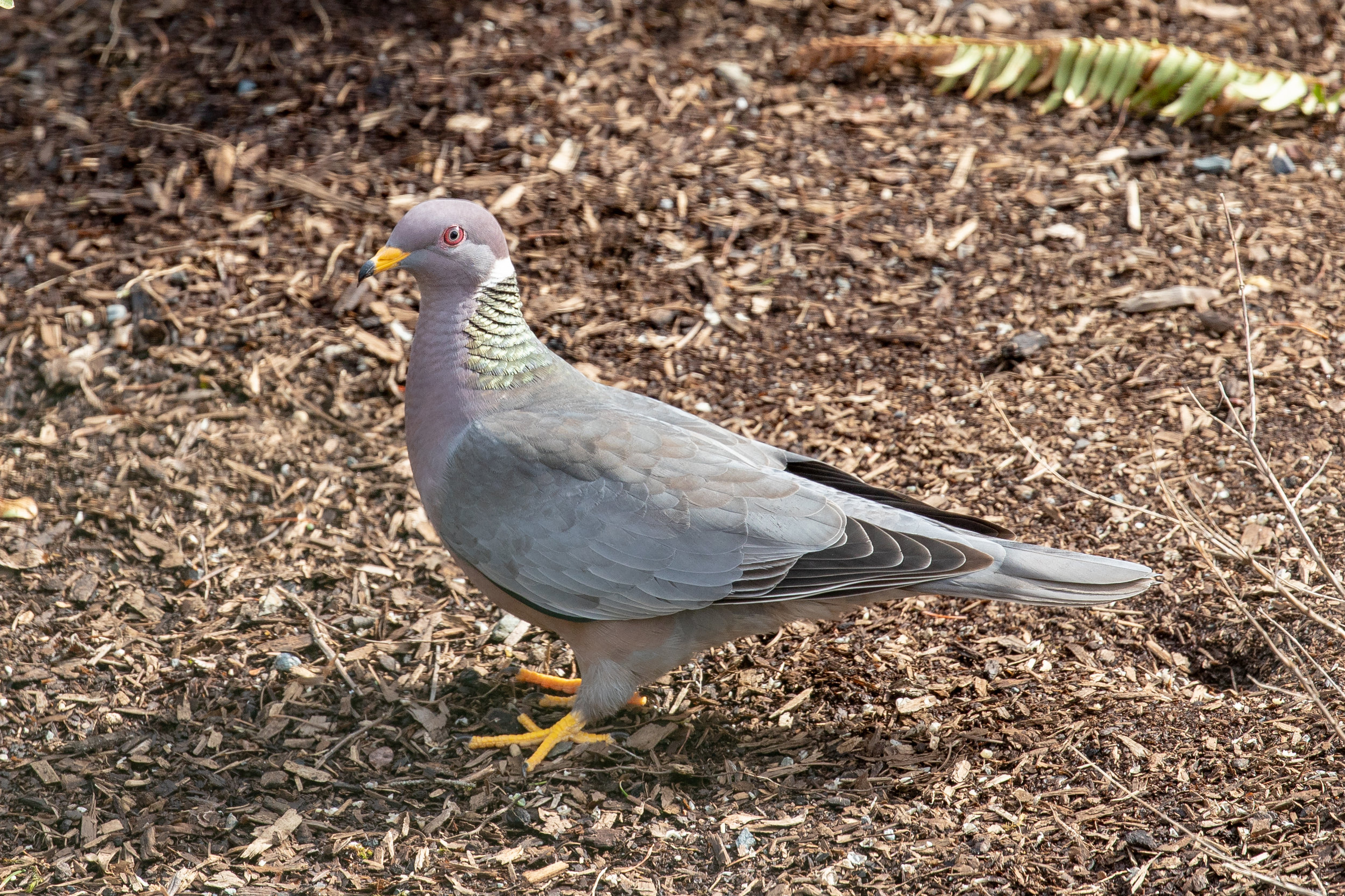Bird of the Month: Band-tailed Pigeon
By Hugh Jennings
PC: Mick Thompson (Band-tailed Pigeon)
Scientific Name: Columba fasciata
Length 14"
AOU Band code BTPI
The Band-tailed Pigeon (BTPI) is about 14 in. long. When you first see the BTPIs, they tend to resemble some of the darker rock doves, or city pigeons. Distant flocks distinguished from rock doves by uniform appearance. The BTPI has a gray terminal band on the tail, yellow legs and yellow at the base of the bill. It has dark gray wings and back, purplish head and breast and a white band on the nape with iridescence under it. The white band may be absent on females and immature birds.
It is locally common in lowland coniferous forests in the northwest, and oak or 0ak-conifer woodlands in the southwest. It is also becoming more common in suburban gardens and parks. Its call is a low cooing whoo-whoo. It coos in upright position with neck inflated and tail spread. In flight display, the male glides in circles with wings and tail spread.
The BTPI often feeds in trees, eating seeds, fruit and acorns. It also feeds on the ground and in shrubs, eating nuts, berries, seeds, and waste grain. Its nest is a flimsy platform of sticks and twigs lined with pine needles placed in a fork or horizontal branch of a tree. The female lays 1 or 2 white eggs. Incubation takes 18-20 days and the young fledge 25-27 days later. They may have 2-3 broods each year.


